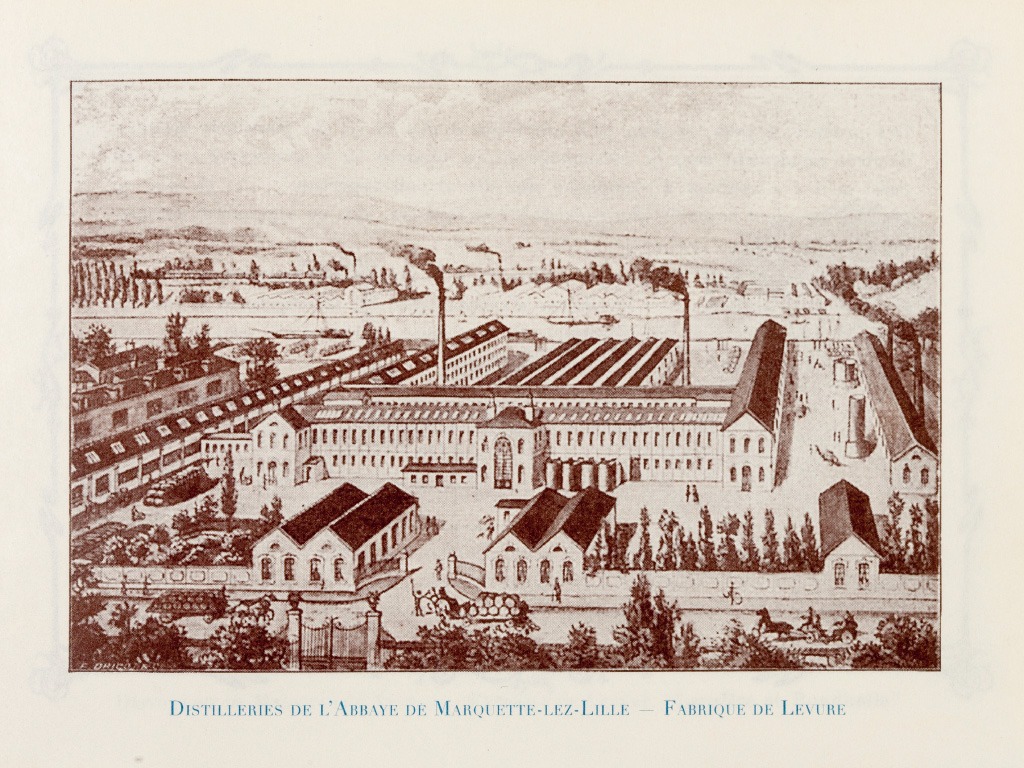Our headquarters have a rich and fascinating history that spans over 150 years. In this article, we will take a journey through time, exploring the evolution of this historic site from its origins as a grain distillery to its current role as the home of our company.
The origins of “Alcool de l’Abbaye”
The story of our Campus begins in 1853 when Louis Lesaffre-Roussel and Louis Bonduelle-Dalle founded the grain distillery known as “Alcool de l’Abbaye.” The site originally produced highly concentrated alcohol as well as jenever from maize, rye, and barley. The name “Alcool de l’Abbaye” was inspired by the fact that the land was purchased from the Church and was originally the grounds of a local Abbey.
Fast forward to 1901 when Lesaffre et Cie was founded and owned both the Marquette distillery and the site in Marcq en Baroeul, the current site of Société Industrielle Lesaffre. At that time, alcohol production was still the main source of income, and yeast production was a minor activity, primarily a means of producing alcohol rather than a business in itself.

The factory during the wars
During the First World War, northern France was occupied by the German invaders, and the factory in Marquette was emptied of all its machinery and equipment. After the allied victory in 1918, the site in Marquette couldn’t be reopened until it was reequipped, which required extensive investments. In 1922, to make the process easier, the site became a subsidiary called “Grandes Malteries Modernes.”
The French state drastically dropped the purchasing price of grain-based alcohol in 1923, making production unviable in Marquette. It was therefore decided that the newly installed equipment would be used to produce malt for breweries. In addition to the malting facilities, the site started distilling sugar beet, but the scale of the installations was insufficient and required a lot of work from 1926 onwards, and only in 1939 did the site break even financially.
During the Second World War, the site in Marquette continued its malt and alcohol production on a much smaller scale. Les Grandes Malteries Modernes were lightly damaged during allied bombings, but production could resume after the war. In the 1950s, Marcel Lesaffre gave Les Grandes Malteries Modernes a new impulse, increasing production threefold and making the site much more profitable than it was in the past.
From the 20th century to the Fermentis Campus
From 1986 onwards, Lesaffre’s malting activity was developed internationally through the acquisition of Froedtert Malt Company. A merger with the malt division of Archer Daniels Midland followed in 1998, and the malt activity grew further after several acquisitions in Australia and New Zealand. In 2003, a new production unit was built in Montana to supply North America.
However, at the turn of the millennium, the malting industry grew increasingly competitive, with new producers in central Europe deploying aggressive pricing strategies. In 2006, the Lesaffre Group left the malting industry altogether to concentrate on its core business: yeast and micro-organisms. Lesaffre’s shares of IMC were sold to the partner Archer Daniels Midland, but Les Grandes Malteries Modernes were not included in the deal. After over 150 years of production, the site was closed.
But the grounds were kept, and in 2020, it was decided that Fermentis would take over the site and build its new headquarters – the Fermentis Campus.








